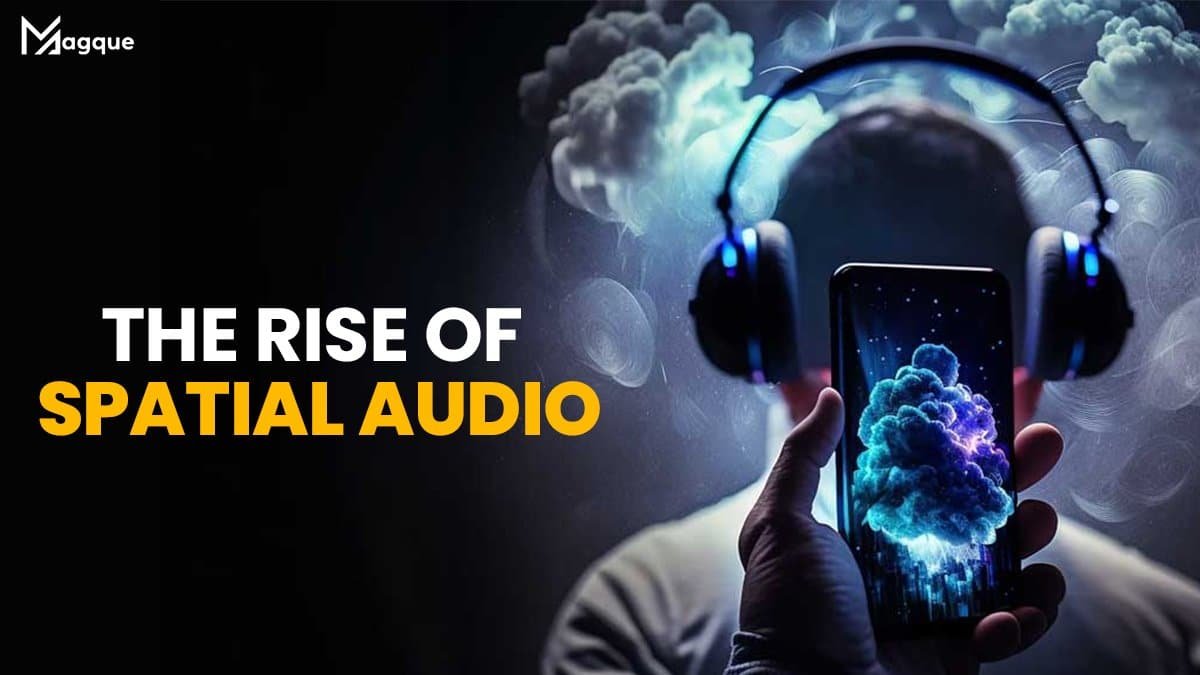Hey there, fellow audio enthusiasts! Have you ever felt like your favourite songs were floating around you, engulfing you in a symphony of sound? Well, brace yourselves because the era of spatial audio is upon us, and it’s about to change how we perceive sound forever!
Imagine You’re sitting in your living room, slipping on your headphones, ready to dive into your favourite playlist. But instead of the music feeling confined to your ears, it expands, filling the entire room around you. That’s the magic of spatial audio – it’s like stepping into a new dimension of sound.
But what exactly is spatial audio? Think of it as the next evolution of audio technology. Instead of simply hearing sound from two channels (left and right), spatial audio adds depth and dimension by incorporating height and distance into the mix. It’s like upgrading from a regular TV to an IMAX theatre. Suddenly, you’re surrounded by the action, immersed in every detail.
So how does it work? Well, it’s all about tricking your brain into believing that sound is coming from different directions. Using advanced algorithms and processing techniques, spatial audio simulates how sound waves interact with your ears in the real world. The result? A truly immersive listening experience that transports you to another realm.
But spatial audio isn’t just about making music sound better. It’s also revolutionizing how we consume other media forms, like movies and video games. Imagine watching your favourite film and feeling like you’re right there on set or playing a game and being able to pinpoint exactly where your enemies are coming from – that’s the power of spatial audio.
And the best part? Spatial audio is more accessible than ever before. With the rise of virtual reality (VR) and augmented reality (AR) technology, developers are finding new and innovative ways to integrate spatial audio into their experiences. Whether you’re exploring virtual worlds or just jamming out to your favourite tunes, spatial audio is enhancing how we interact with technology on a whole new level.
So, are you ready to take your listening experience to the next dimension? With spatial audio leading the way, the possibilities are endless. So sit back, relax, and let the sound waves wash over you – trust me, you won’t be disappointed. Welcome to the future of audio – welcome to spatial audio.
In conclusion, the rise of spatial audio is revolutionizing how we experience sound, offering a level of immersion and depth previously unimaginable. As technology continues to evolve, so will our understanding and appreciation of spatial audio. So why wait? Dive in and experience the magic for yourself – your ears will thank you! And be sure to explore Magque, your go-to source for the latest and most intriguing updates in the realms of informative tips & reviews!
FAQs
Q1. What exactly is spatial audio?
Spatial audio is a cutting-edge technology that enhances the listening experience by simulating how sound waves interact with our ears in the real world. It adds depth and dimension to audio by incorporating factors like height and distance, creating a more immersive environment for the listener.
Q2. How does spatial audio differ from traditional audio?
Unlike traditional audio, which typically involves two channels (left and right), spatial audio goes beyond by adding additional dimensions such as height and distance. This creates a more realistic and immersive sound experience, making it feel like the sound comes from all around you rather than just your headphones or speakers.
Q3. What devices support spatial audio?
Spatial audio is becoming increasingly popular and is supported by various devices, including headphones, speakers, and smartphones. Many streaming platforms and content creators also embrace spatial audio technology, allowing users to experience their favourite music, movies, and games in this immersive format.
Q4. How is spatial audio being used in different industries?
Spatial audio is not limited to entertainment; it is also utilized in industries such as virtual reality (VR), augmented reality (AR), gaming, and even education and training. In VR and AR applications, spatial audio helps create a more realistic and immersive environment, while in gaming, it enhances the player’s ability to locate and identify in-game sounds.
Q5. Is spatial audio accessible to everyone?
Yes, spatial audio is becoming increasingly accessible to consumers. As the technology continues to evolve, more and more devices and platforms are incorporating support for spatial audio, making it easier for users to enjoy this immersive listening experience. Additionally, plenty of resources are available online for creators and developers looking to implement spatial audio into their content.
Read Also This:- Exploring the World of Spatial Audio Technology













